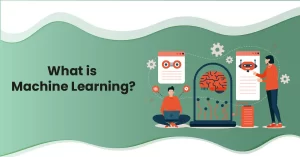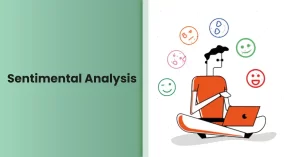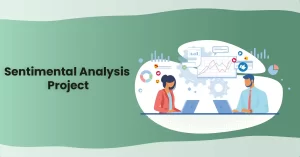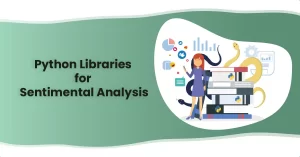Introduction to Sentimental Analysis Project
Are you looking for a top Sentimental Analysis Project? Do you want to put your knowledge of sentiment analysis and machine learning to the test? You’ve come to the right place. In this post, we’ll go through several sentimental analysis projects that you may use to demonstrate your comprehension and test your knowledge.
We understand how difficult it is to come up with outstanding project ideas. We also understand the importance of completing tasks. You may improve your expertise, expand your portfolio, and land better positions by working on projects.
Sentimental Analysis Project And Its Importance
Emotions are important in both personal and professional lives. What your consumers and target audience think of your goods or brand gives you the context you need to analyze and enhance your product, business, marketing, and communications strategies. Researchers and businesses may use sentiment analysis or opinion mining to gain knowledge from user-generated social media and web data.
Brands have become essential to understand consumers’ opinions about the brand and products, regardless of industry or vertical. With such fierce competition for high-paying employment in the ML business, a dull cookie-cutter résumé might not be enough. Working on a sentimental analysis project using actual datasets, on the other hand, can make you stand out in job applications and increase your chances of getting a callback from the employer.
What is Machine Learning?

In the above image, we can see that Machine Learning is a subset of Artificial Intelligence.
Machine learning is a type of analysis of data that automates the creation of analytical models. It’s a subset of AI-based on the premise that computers can learn from data, recognize patterns, and make judgments with little or no human input.
In a nutshell, Machine learning is an area of artificial intelligence (AI) and computer science that focuses on using data and algorithms to mimic the way people learn, with the goal of steadily improving accuracy.
Sentimental Analysis Project in Machine Learning
Sentiment analysis, often known as opinion mining, is a straightforward process of determining the feelings of a text’s author. What was the writer’s intention when he or she wrote something?
To find out what may be subjective information, we employ a variety of natural language processing (NLP) and text analysis technologies. For better categorization and data manipulation, we must detect, extract, and quantify such information from the text. Natural language processing, or NLP, is the foundation upon which sentiment analysis is based. Natural language processing is a subset of Machine Learning that is concerned with extracting information from text.
NLP is the field of AI that deals with texts, allowing machines to interpret and infer meaning from them. It comprises anything from counting the number of words to a machine producing a tale that is indistinguishable from human texts for jobs like a virtual assistant, query resolution, establishing and sustaining human-like dialogues, summarising texts, spam detection, sentiment analysis, and so on.
Sentimental Analysis

What is Sentimental Analysis?
Sentiment analysis (also known as opinion mining) is a natural language processing (NLP) approach for determining the positivity, negativity, or neutrality of data. Sentiment analysis is frequently used on textual data to assist organizations in tracking brand and product sentiment in consumer feedback and better understanding customer demands.
Why do we need Sentimental Analysis?
Sentiment analysis is quickly becoming a crucial tool for monitoring and understanding sentiment in all forms of data, as individuals communicate their ideas and feelings more openly than ever before.
Brands can learn what makes consumers happy or irritated by automatically evaluating customer feedback, such as comments in survey replies and social media dialogues. This helps them to customize products and services to match their customers’ demands. Using sentiment analysis might help organizations figure out why consumers are pleased or unhappy at each point of the customer journey.
Example of Sentimental Analysis Project
Here are some examples to help you understand the purpose and problems of the sentimental analysis project:-
- Social media monitoring
- Brand monitoring
- Customer support analysis
- Customer feedback analysis
- Market research
Sentimental Analysis Project

Amazon Product Reviews
The first Sentimental Analysis project idea for beginners is to evaluate Amazon product reviews. Amazon is among the most popular e-commerce sites, with a large product range. When businesses want to know what their consumers think about their products, they may use sentiment analysis to find out. It also aids in identifying the key flaws in their products.
Scraping raw alpha-numeric text of numerous items from Amazon is the starting point for this sentimental analysis project. These reviews must go through a text processing stage, which converts text into numbers largely using TFIDF (Term Frequency Inverse Document Frequency). SVM (Support Vector Machines) classification models of machine learning may identify a statement as ‘Positive’ or ‘Negative.’
Companies are looking for specialists to utilize sentiment analysis to assess existing customer reviews for market research, therefore this project is in high demand. Beginners should start with less popular items, while those looking for a challenge could choose a popular product and study reviews.
Download Dataset for this Sentimental Analysis Project of Amazon Product Review:-
Rotten Tomatoes Movie Reviews
Rotten Tomatoes is a website where reviewers and movie lovers write reviews for movies and television series. Almost every TV series, program, or drama from practically every language has been reviewed on the platform. It’s a large dataset that may be used to do sentiment analysis on the reviews. An excellent dataset for a sentimental analysis project.
The movie review sentiment analysis is a classic model problem since a movie can have multiple sentiments — negative, somewhat negative, neutral, fairly positive, and positive. Since a movie review can have additional characters such as emojis, the extracted data has to go through data normalization. Text processing steps like tokenization and the number of occurrences of words within the text can be conducted by using the NLTK (natural language toolkit) library.
The entertainment business takes critical evaluations significantly, and it also aids production firms in determining why a series or film was successful (or failed). People consult reviews before purchasing movie tickets, therefore critics’ reviews have an effect on the business
success of a play or film. Production houses can employ sentiment analysis to determine what the general view of critics is.
Download Dataset for this Sentimental Analysis Project of Rotten Tomatoes Movie Reviews:-
IMDb Reviews
A machine learning sentimental analysis project is the next project on our list. IMDb, like Rotten Tomatoes, is an entertainment review website where users may offer their thoughts on various films and television shows. You may use sentiment analysis to figure out what the audience loved and hated about the show. This sentimental analysis project for beginners will teach you about machine learning and data science in the entertainment business.
In any language, a movie review usually contains certain common terms like articles, parts of speech, pronouns, punctuations, and so on. Stopwords are a type of repeating term that does not contribute much information to a text. Stopwords are effectively removed from text processing using NLP packages like spaCY. Because the dataset may only include significant terms, the dataset would be smaller, and multi-class model performance would increase.
These findings can help production firms figure out why their film succeeded or failed. Beginners may put their talents to the test with the little IMDb reviews dataset. For a more advanced version of the project, you may utilize the IMDb Dataset containing 50k movie reviews.
Download Dataset for this Sentimental Analysis Project of IMDB Movie Reviews:-
- IMDB Dataset of 50K Movie Reviews – link for Sentimental Analysis Project
- IMDb reviews Dataset:- Link for a small dataset for beginners.
Twitter Sentiment Analysis
You’ll learn how to construct a Twitter sentimental analysis project using Python in the first advanced sentiment analysis project. Twitter enables organizations, businesses, and governments to obtain public feedback on any issue that is trending. You need to have some basic or intermediate familiarity with opinion mining to complete this Twitter sentimental analysis project.
Because the Twitter API is necessary to extract data, you should also have some knowledge of RESTful APIs. Later in the project, the Naïve Bayesian Classifier is used to categorize the data. It’ll take some time, but it’ll demonstrate your knowledge of opinion mining.
Begin by obtaining Twitter’s approved credentials, creating the function, and creating your first test set using the Twitter API. They won’t influence the polarity of sentiment analysis until you know how to employ deep learning for non-textual components. Data cleansing is essential for getting the best results, therefore eliminating duplicate characters and mistakes. For this sentimental analysis project, use the Naive Bayes Classifier. Finally, put your model to the test to check if it produces the required outcomes. Sentiment analysis on tweets is an excellent approach to put your knowledge to the test.
Download Dataset for this Sentimental Analysis Project of Twitter Sentiment Analysis:-
Toxic Comments Classification
People are encouraged to contribute their expertise through forums, blogs, online forums, and websites like Wikipedia. However, not all user participates in the way that they should. Some people use these forums to express their fear, wrath, and biases about social issues, organizations, and the government. User-generated content platforms, such as Wikipedia, rely on human input to edit and approve the material. To maintain optimism, the community must swiftly identify and delete bad information.
Analyses have generally been restricted to organized data inside organizations over the years. Companies, on the other hand, are starting to see the value of unstructured data in terms of creating insights that may help them improve their operations. As a result, there’s a growing demand for individuals who can do different NLP-based analytics, such as sentiment analysis, to help businesses make better judgments. Gaining experience through the initiatives indicated above can help you stand out in the challenging data science field, leading to greater employment opportunities for your career advancement. You need to have some basic or intermediate familiarity with opinion mining to complete this Twitter sentimental analysis project.
Download Dataset for this Sentimental Analysis Project of Toxic Comments Classification:-
Reviews of Scientific Papers
The sentimental analysis project of citing contexts in research/review publications is an area that has yet to be studied, owing to the widespread belief that most journal articles have positive citations. Furthermore, unfavorable citations are rarely unambiguous, and criticisms are frequently hidden. There is a dearth of expressive emotion expressions, which makes accurate polarity recognition difficult.
Obtaining feelings from research articles needs both basic and in-depth investigation. In such circumstances, the rule-based analysis may be performed utilizing various NLP concepts such as Latent Dirichlet Allocation (LDA) to classify research articles by comprehending their abstracts. LDA models are statistical models that use the ‘topic-model’ notion to generate mathematical intuition from a series of documents.
Sentimental analysis project of citation in scientific articles and journals is an attractive sentimental analysis project concept that can assist academics in determining what experts in various disciplines think about a subject.
Download Dataset for this Sentimental Analysis Project of a scientific paper:-
Facebook Comments Sentiment Analysis
Let’s start with the Facebook page. It contains over 30,000 comments, and after analyzing them under the previously specified categories (Payment, Service, Cancel, Safety, and Price), we discovered that the Price area received the majority of the favorable feedback. The category with the largest percentage of negative feedback, on the other side, was service. However, we kept in mind when doing this study that Facebook’s comments are full of spam, ideas, news, and other bits of information.
As a consequence, we eliminated all of the unneeded categories, and our findings altered as predicted. Negative comments now outnumber positive comments in all areas, and the ratio in each category has shifted. The percentage of unfavorable remarks in price-related comments increased by 20%. It’s for this reason that data cleansing is critical. It assists you in obtaining precise findings.
Download Dataset for this Sentimental Analysis Project of Facebook Comments Sentiment Analysis:-
Customer Feedback Project
The following sentiment analysis project uses customer input to gather insights. If you own a business that provides services and asks customers to provide feedback on your forum or via email, this project can help you figure out how satisfied they are. It may also indicate ho
w happy your staff are with your organization and its operations. Sentiment analysis can identify sarcasm, interpret popular chat acronyms (LOL, ROFL, etc. ), and fix common errors such as misspelled and misused words.
Text-processing techniques such as part-of-speech tagging and lemmatization are used to decipher customer feedback emotions (transforming a word to its root form). Developers can use these transforms the data for feature engineering. With cloud services technologies, learners may undertake such analyses in a short amount of time while utilizing fewer resources.
Download Dataset for this Sentimental Analysis Project of Customer Feedback Project:-
Python Libraries for Sentimental Analysis Project

For sentiment analysis, Python is an open programming language. Python has the benefit of having a large number of open-source libraries that are free to use and it will assist you in completing sentimental analysis project. These make creating your own sentiment analysis solution a lot easier. Here are some resources to help you get started with sentiment analysis in Python:-
Scikit Learn
It is a popular machine learning package that includes text vectorization techniques. It’s simple to train a classifier on top of vectorizations like frequency or tf-idf text vectorizers. Support Vector Machines, Nave Bayes, and Logistic Regression are just a few of the algorithms implemented in Scikit-learn. It’s a crucial library for your Sentimental Analysis Project.
Natural Language Toolkit (NLTK)
It is one of the most popular NLP packages for Python. It has features such as tokenization, stemming, and part-of-speech tagging. VADER is a pre-trained sentiment analyzer in NLTK (Valence Aware Dictionary and sEntiment Reasoner). VADER is better suited to shorter sentences, such as those seen in social media messages. When grading lengthier and more complicated sentences, it could be less accurate. It is a very important library for Sentiment analysis, therefore, it is a must for your sentiment analysis project.
PyTorch
PyTorch is a machine learning library that was created largely by Facebook’s AI Research group. It is popular among developers due to its ease of use and integration. PyTorch is a new deep learning framework backed by some of the world’s most famous companies, including Facebook, Twitter, Nvidia, Salesforce, Stanford University, the University of Oxford, and Uber.
Keras
Keras provides helpful abstractions for working with a variety of neural network types, such as recurrent neural networks (RNNs) and convolutional neural networks (CNNs), as well as the ability to quickly stack layers of neurons. Tensorflow or Theano may be used to execute Keras. It also includes valuable text categorization techniques.
Conclusion
Machine learning and natural language processing (NLP) are used in sentiment analysis to determine if a test is negative, positive, or neutral. Rule-based and automated sentiment analysis are the two basic ways.
We hope that this article has provided you with a decent sentimental analysis project and how you may use it for your company. Sentiment analysis is a fast-paced discipline that is always changing and evolving. That’s why it’s critical to keep up with the current trends and hope you’ll gain confidence after completing the sentimental analysis project.
In machine learning, sentiment analysis is a crucial subject. It has a wide range of uses in a variety of disciplines. If you want to learn more about this subject, visit our blog on data science and artificial learning, where you’ll find a wealth of new information.
On the other hand, if you want a well-structured and complete learning experience, as well as to learn more about machine learning, check our course on PG Program in Data Science, Machine Learning & Neural Networks in collaboration with IBM
Frequently Asked Question’s
1. What means sentiment analysis?
The process of identifying positive or negative sentiment in the text is called as sentiment analysis. Businesses frequently utilize it to identify emotion in datasets, assess brand reputation, and gain a better understanding of their consumers.
Sentiment analysis, sometimes called opinion mining, is a simple method of identifying a text’s author’s sentiments. When a writer writes anything, what is his or her intention?
We use a number of natural language processing (NLP) and text analysis methods to figure out what could be subjective information. We must discover, extract, and quantify such information from the text in order to improve classification and data manipulation. Sentiment analysis is built on the foundation of natural language processing, or NLP. Natural language processing is a branch of Machine Learning that deals with extracting data from text.
2. What do you do with sentiment analysis?
Core company objectives include increasing revenue and maintaining clients. According to Apex Global Learning’s research, every extra rating in an online review results in a 5-9 percent increase in income. Between firms with a three-star rating and those with a five-star rating, there is an 18 percent difference in revenue.
Sentiment analysis may assist you to understand how a large number of people feel about the company or product. Because there is so much data, this is frequently impossible to accomplish manually. Businesses may now acquire greater insight into their textual data using specialized SaaS technologies. Customer evaluations, staff surveys, and online posts are all examples of this. These sources’ sentiment data can be utilized to guide crucial business decisions.
3. What are the types of sentiment analysis?
Sentiment analysis uses natural language processing, machine learning, and other data analytics approaches to evaluate raw text in order to get objective quantitative findings. It’s used to identify positive or negative emotions in text, and it’s frequently employed by businesses to determine their brand’s reputation among consumers.
Sentiment analysis is a sort of data analysis that focuses on sentiments and emotions, urgency, goals, and polarity. The following are the most common forms of sentiment analysis:-
- Fine-grained sentiment analysis
- Emotion detection
- Aspect based sentiment analysis
- Multilingual sentiment analysis
4. Which model is best for sentiment analysis?
The most recent, efficient, and extensively utilized technique to sentiment analysis is hybrid sentiment, analysis models. You can receive the benefits of both automated and rule-based systems if you have well-designed hybrid systems.
Hybrid models can combine the capability of machine learning with customization flexibility. Try to learn this model on your Sentimental Analysis Project.
5. Why is Twitter used for sentiment analysis?
Sentiment analysis is the approach of identifying and classifying the sentiments represented in a text source. When analyzed, tweets are typically beneficial in providing a large volume of sentiment data. These statistics are useful in determining public opinion on a variety of subjects.
In order to compute the consumer perspective, we must create an Automated Machine Learning Sentiment Analysis Model. It becomes challenging to apply models on them due to the existence of non-useful characters (together referred to as noise) alongside relevant data.
6. Is Twitter sentiment analysis supervised or unsupervised?
The machine learning method used in sentiment analysis is mostly supervised classification. Two pieces of data are required for machine learning techniques:
- Training dataset
- Create a test set.
To categorize the tweets, a number of machine learning approaches have been developed. In sentiment analysis, machine learning approaches such as Naive Bayes (NB), maximum entropy (ME), and support vector machines (SVM) have had a lot of success.
The first step in machine learning is to obtain a training dataset. We next use the training data to train a classifier. After you’ve decided on a supervised classification approach, one of the most critical decisions you’ll have to make is which features to use. They can provide information on how papers are displayed.
7. Is sentiment analysis part of data science?
Sentiment analysis is a type of artificial intelligence that is based on natural language processing. It might allow businesses to search social media, the internet, and their backlog of customer support tickets to see what prospective customers and prospects are saying about their brand and services. As a result, the company will be able to create commercials and goods that its prospects and consumers would enjoy, increasing marketing campaign conversion rates.
Machine learning is basically a subset of Artificial intelligence, that concentrates on a narrow range of tasks. Perhaps the only true artificial intelligence program that addresses real-world issues. Data Science techniques and applications are used in Machine Learning to produce products that cope with real-world difficulties.













